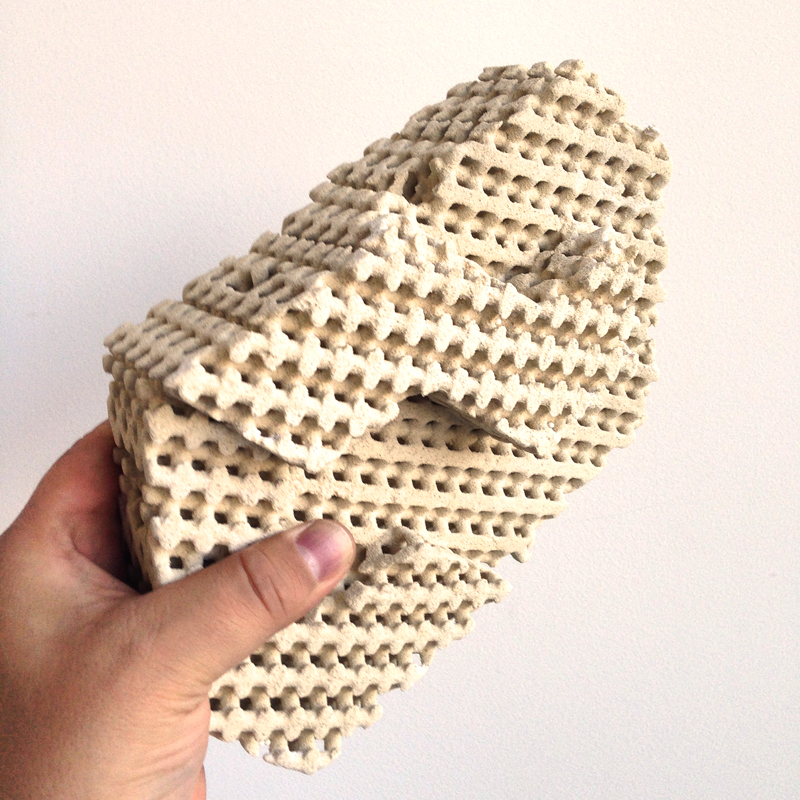
Evaporative cooling is the addition of water vapor into air, which causes a lowering of the temperature of the air. Before the advent of refrigeration, evaporative cooling was used for millennia. Porous ceramic vessels were used to cool water by evaporation through their walls. Frescoes from about 2500 BC show slaves fanning jars of water to cool rooms.
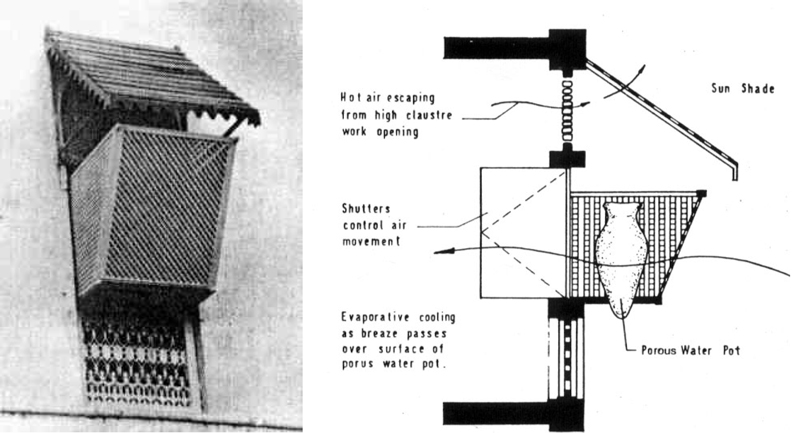
Inspired by the Muscatese Evaporative cooling window, which combines a wood screen, or mashrabiya, and a ceramic vessel filled with water, the “cool brick” masonry system is used to build walls that passively cool interiors in desert environments.
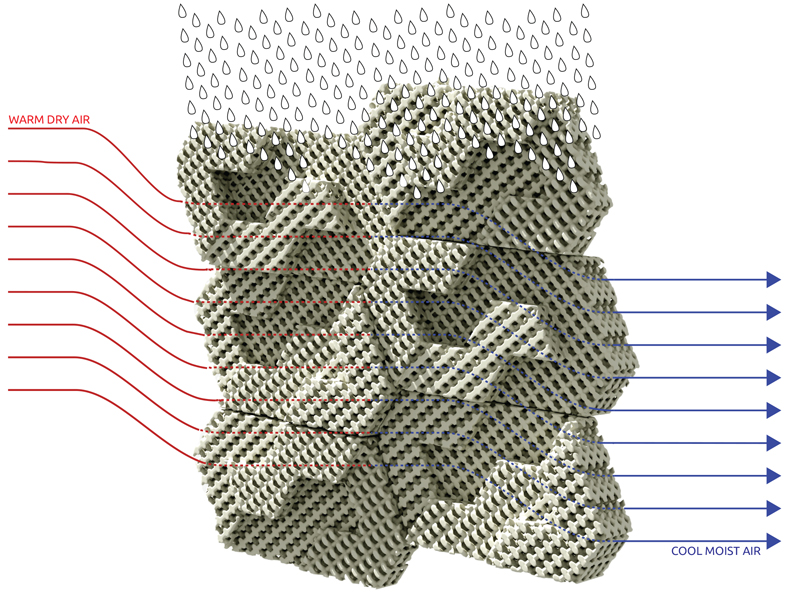
Comprised of 3D printed porous ceramic bricks set in mortar, each brick absorbs water like a sponge and is designed as a three dimensional lattice that allows air to pass through the wall. As air moves through the 3D printed brick, the water that is held in the micro-pores of the ceramic evaporates, bringing cool air into an interior environment, lowering the temperature using the principle of evaporative cooling.
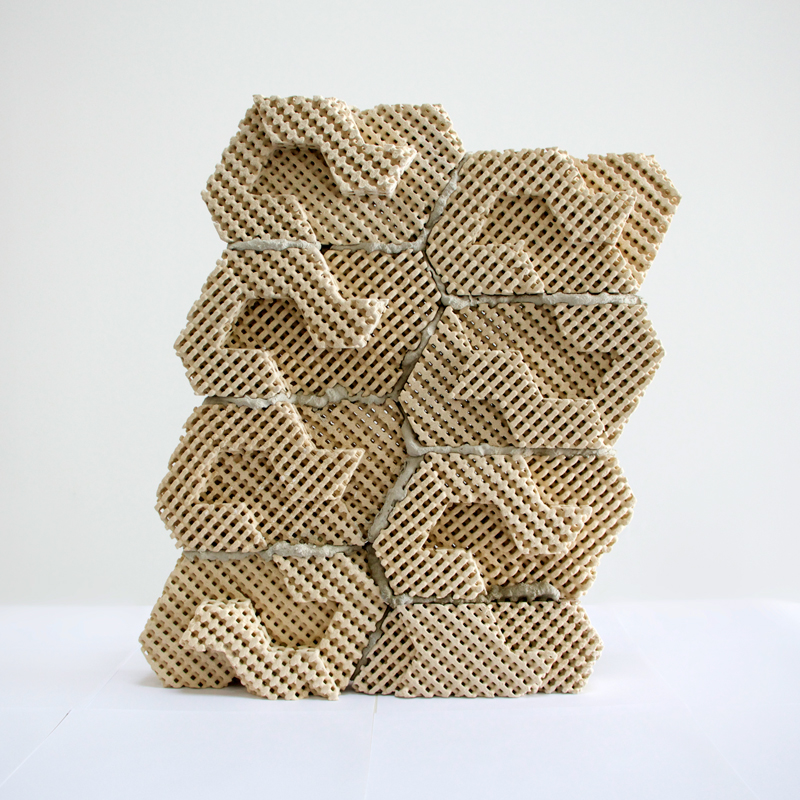
The bricks are modular and interlocking, and can be stacked together to make a screen. The 3D lattice creates a strong bond when set in mortar. The shape of the brick also creates a shaded surface on the wall to keep a large percentage of the wall’s surface cool and protected from the sun to improve the wall’s performance.
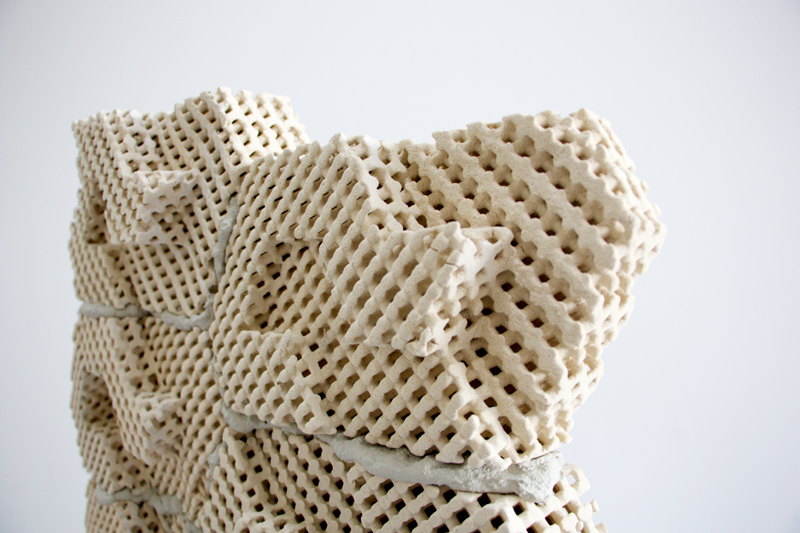
Project Date: 2015
Project Location: For use in dry, hot climates
Design Team: Virginia San Fratello & Ronald Rael
Additional Project Information: The cool brick was made possible through the generous sponsorship of TETHON 3D. Cool Brick can be viewed at Data Clay: Digital Strategies for Parsing the Earth — the first public exhibition to present the growing movement of architects, artists, and designers exploring the medium of ceramics coupled with digital technologies, at the San Francisco Museum of Craft and Design from January 17 through April 19, 2015.